Once again, thanks for being nosy and coming for my power data. In return, please put your email in the little box below so you never miss it again…
Rattlesnake Gravel, a grassroots race out of Texas. I was returning to try and defend my title from the year before, but the course was slightly different and the heat threw a curveball. I was arguably the race favourite, and I wanted to make it a hard day out too: here’s the power data.
Result: 1st
Time: 5:04:18
Average Power: 265w
Normalised Power: 298w
Average HR: 155bpm
Ride Weight: 70kg
Work: 4810kJ
The File: https://www.strava.com/activities/13957750883
Key Moments:
1. First Climb
We rolled out into a block headwind and hardly touched the pedals for the first 15km. We then turned onto a steep climb. I planned to split the race here down to a small group of around five. I first attacked to test the water, and then went again on the steep section. The goal here was split the group but don’t explode it.
Power:
1min: 580w
2min: 554w
2. ‘Over the Top’
We waited a second over the top and then pushed on. I was pretty buckled for the first few minutes post-effort. Those first race efforts of the year always hurt extra. There were five of us, each pulling a turn into a slightly downhill false flat headwind section.
3. The Middle Section
The middle part was made up of a lot of pulling even turns, riding into crazy wind and tactical racing. With the heat rising from 15-degrees on the start line to long past 30 in the final hour, it was as much a race of saving matches as it was setting off watt bombs.
4. Race Winning Move
The final double track section was through private ranch land. It was twisty, up, down, sandy, rocky, slippy, and everything else you imagine from a private track through a ranch. The power file isn’t that impressive, but you can see on Alex’s analysis below that my W’ - essentially my battery - was massively depleting.
The raw power of this one really wasn’t overly impressive. As you can see, the final section was some 18-minutes, and I was probably solo from about where the line is. It’s interesting looking back on this power file. We were very much at warp speed. The course dictated that times were spent freewheeling or soft tapping into the fast corners.
This section was pure jeopardy with the terrain, and honestly I thought the file would be higher!
My Conclustions
This race is far from my best power file, but it felt bloody hard. As we got deeper into the race and the temperature rose, I suffered big time in the heat.
Racing is funny in a way, it’s rare that you put out huge numbers and power records, it’s more like you’re riding a breakaway all day.
Coaches Corner
Alex Welburn is a performance consultant and sports scientist.
The plan was simple: win. The objective itself was clear, but the focus was on how we would achieve it. Joe knew how this race typically unfolded, and our familiarity with the route meant we could identify key moments to tilt the odds in our favour.
Two main factors shaped our approach: the first climb and the heat. We anticipated that rising temperatures in the latter half of the race would impact performance, so the goal was to establish the best possible position before those effects became significant.
The two-minute climb at the start was vital. Pushing hard enough to split the field but leaving enough in reserve for a second surge. With a solid understanding of Joe’s Critical Power (CP) and W’, we calculated an effort at 70–80% of his maximum depletion capacity. My research suggests that under specific conditions, athletes can extend their time above CP beyond traditional predictions, and this insight shaped our approach.
Joe here. In reality, I threw our original plan to the wind and went harder than we accounted for. I felt good, and rode off instinct rather than my power meter.
The red line represents Joe’s W’, a concept central to my PhD research. Think of it as his battery for efforts above CP:
Above CP → the battery depletes.
Below CP → the battery recharges.
Joe executed the plan —attacking early but not fully depleting W’, ensuring he had enough energy for another push or at least to sustain CP.
The Role of Heat
Heat was always going to be a factor. Joe made his move while temperatures were still moderate, keeping most of his efforts within the first half of the race. The slight decline in W’ toward the end was a result of tactical racing moves. However, the current model does not yet account for CP reductions due to heat—something we are actively developing along with a durability factor.
Bike Set Up and Why I Ran Panaracer Gravelking X1 45mm
I ran the ENVE MOG with ENVE 4.5 SES wheels. It’s a through-and-through gravel race bike, and the 4.5s just made it that little bit more aero. There’s an argument that the 4.5s could’ve been too much given the crosswinds, but the ENVEs are stable in that stuff.
Tyres, well this was up for debate. I used the Panaracer GravelKing X1 in 45mm. It’s a great all-round tyre and capable of handling the rocky descents that we tackled, but also the fast road sections. It’s the beauty of an allrounder.
Last year I rode 42mm’s last year to the win, this year I chose 45mm tyres. Honestly, I think the best tyre for this course is a 50mm. The 50mm would give that little more comfort, while still maintaining race speed.
While you’re here…
I’ve added a paid subscription and a ‘Buy Me A Coffee’ link to this post. As the year progresses, I’m planning on building this blog and putting out articles which I’ve always wanted to write but, for whatever reason, haven’t wanted to pitch. Your contributions allow me to do that.
https://www.buymeacoffee.com/joelaverick
The following brands are racing partners of mine which allow me to do cool stuff.

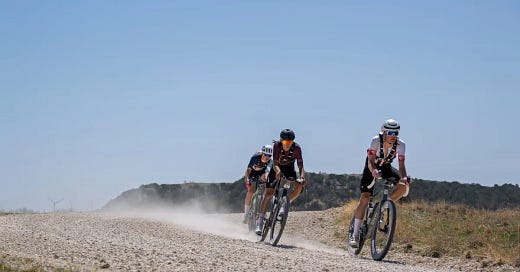



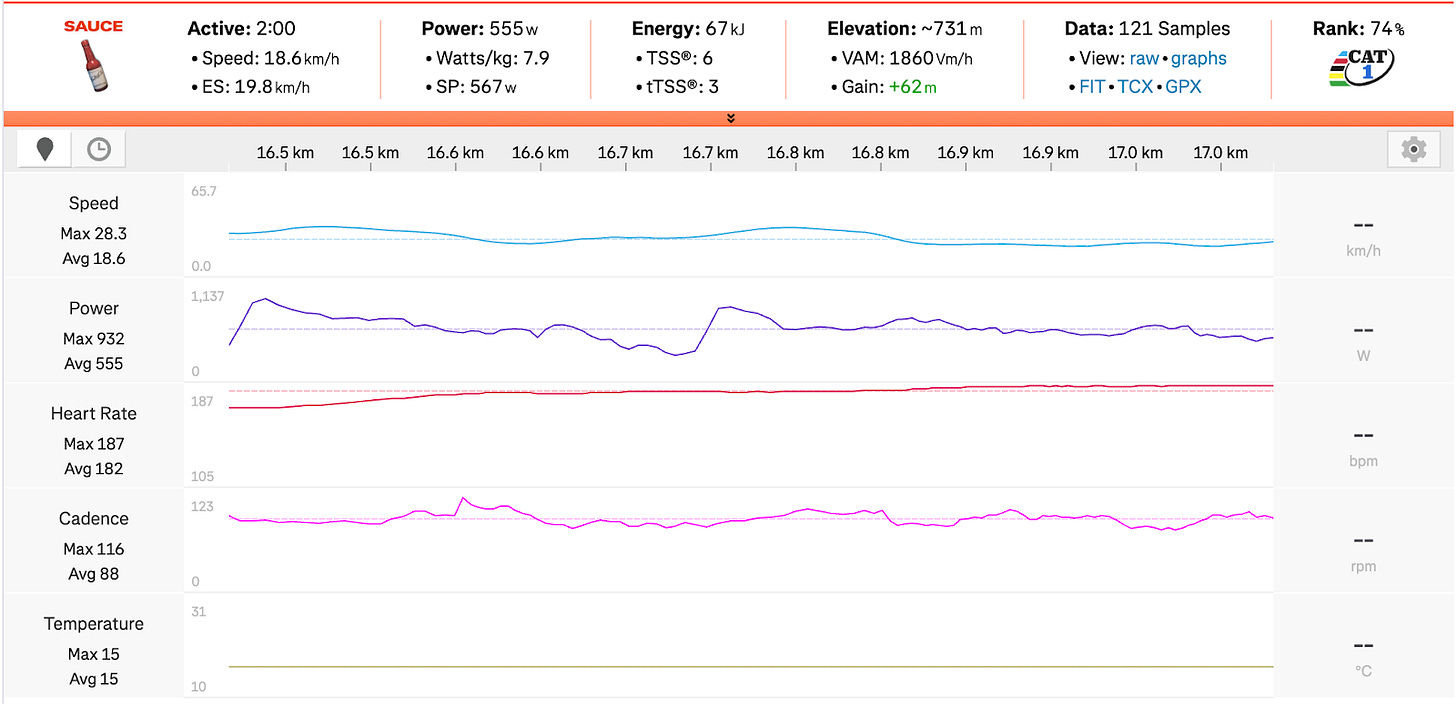
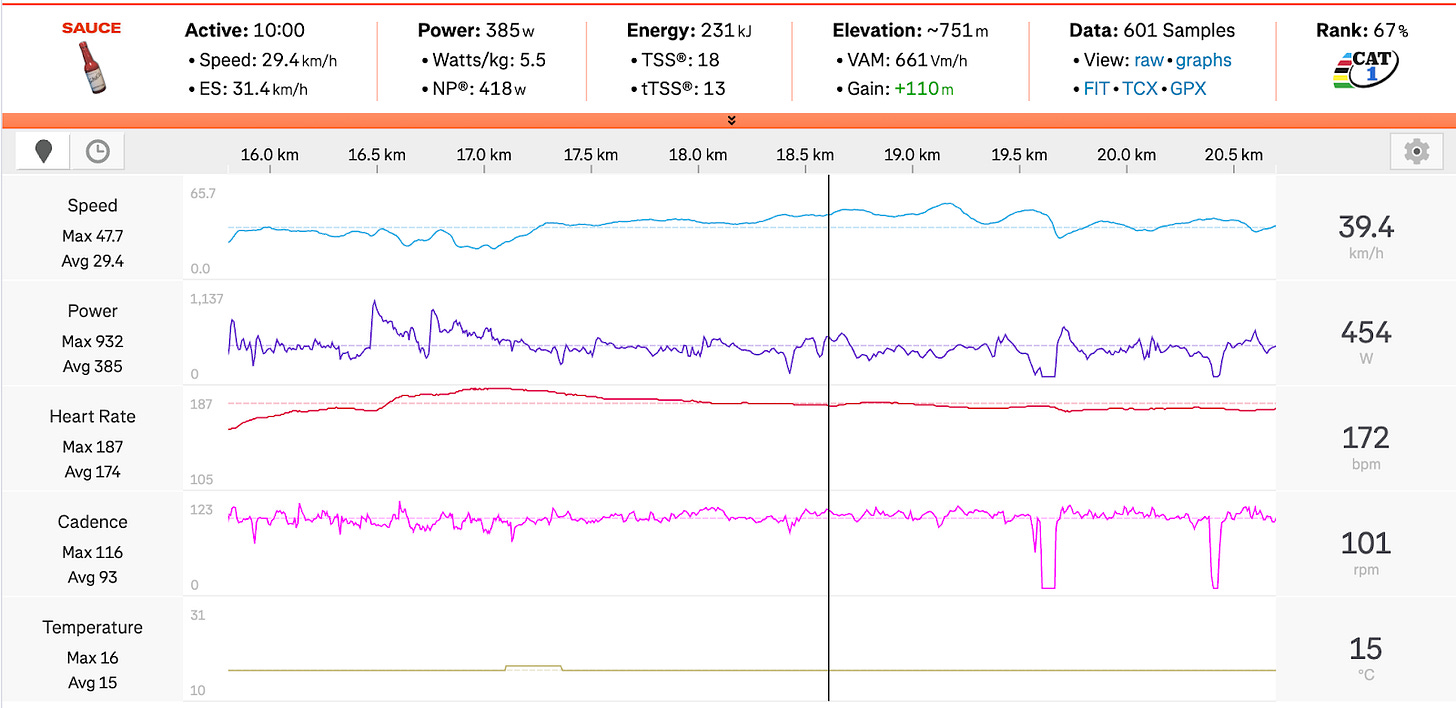
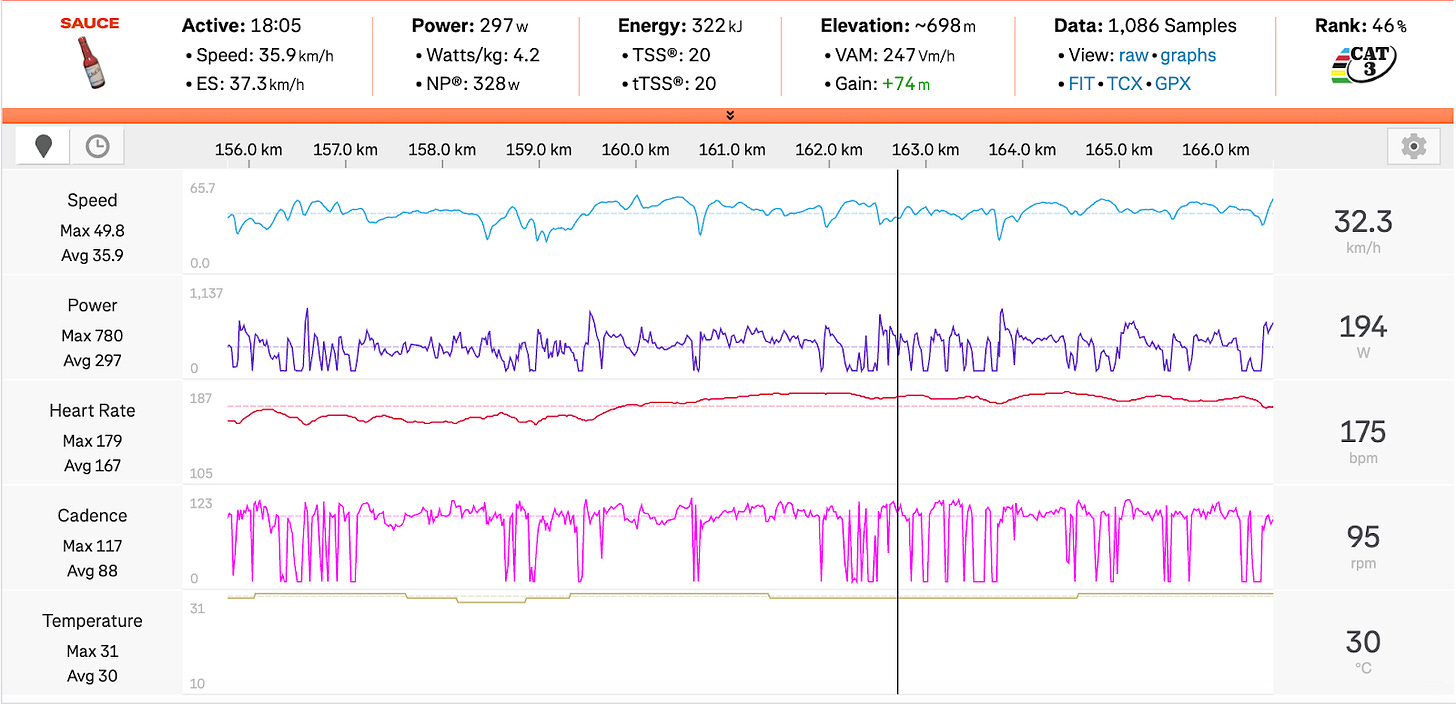
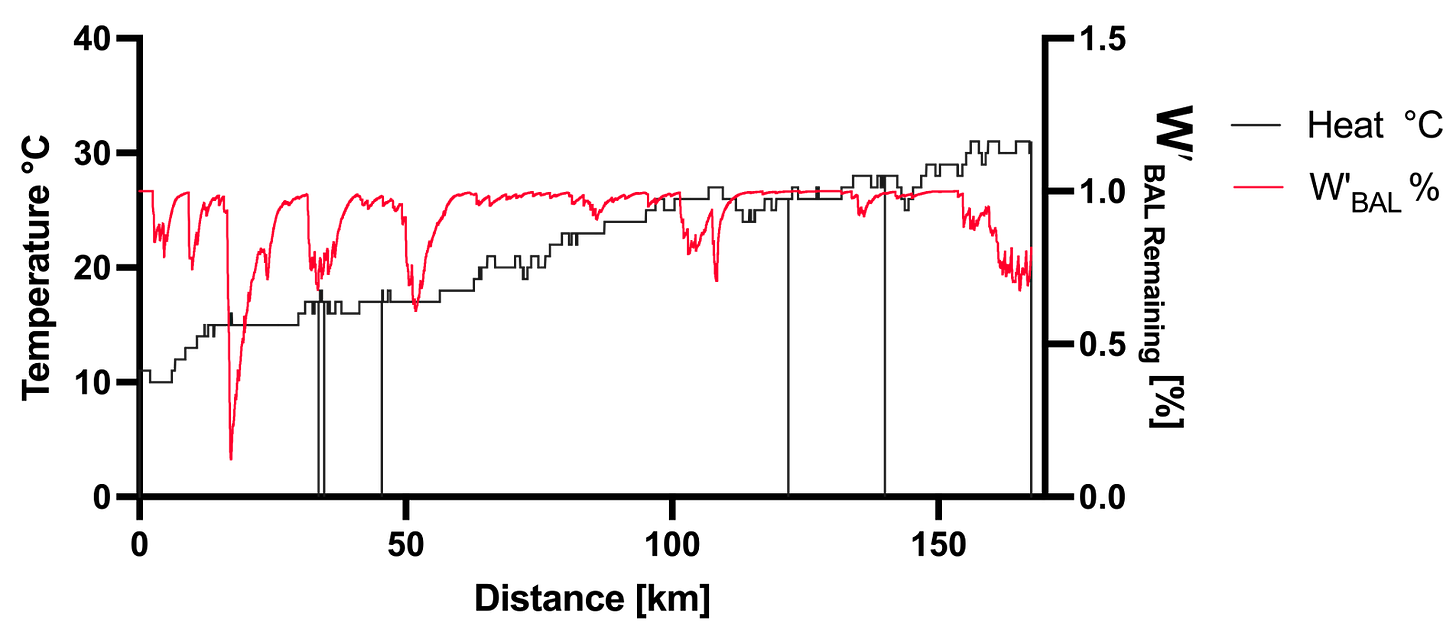
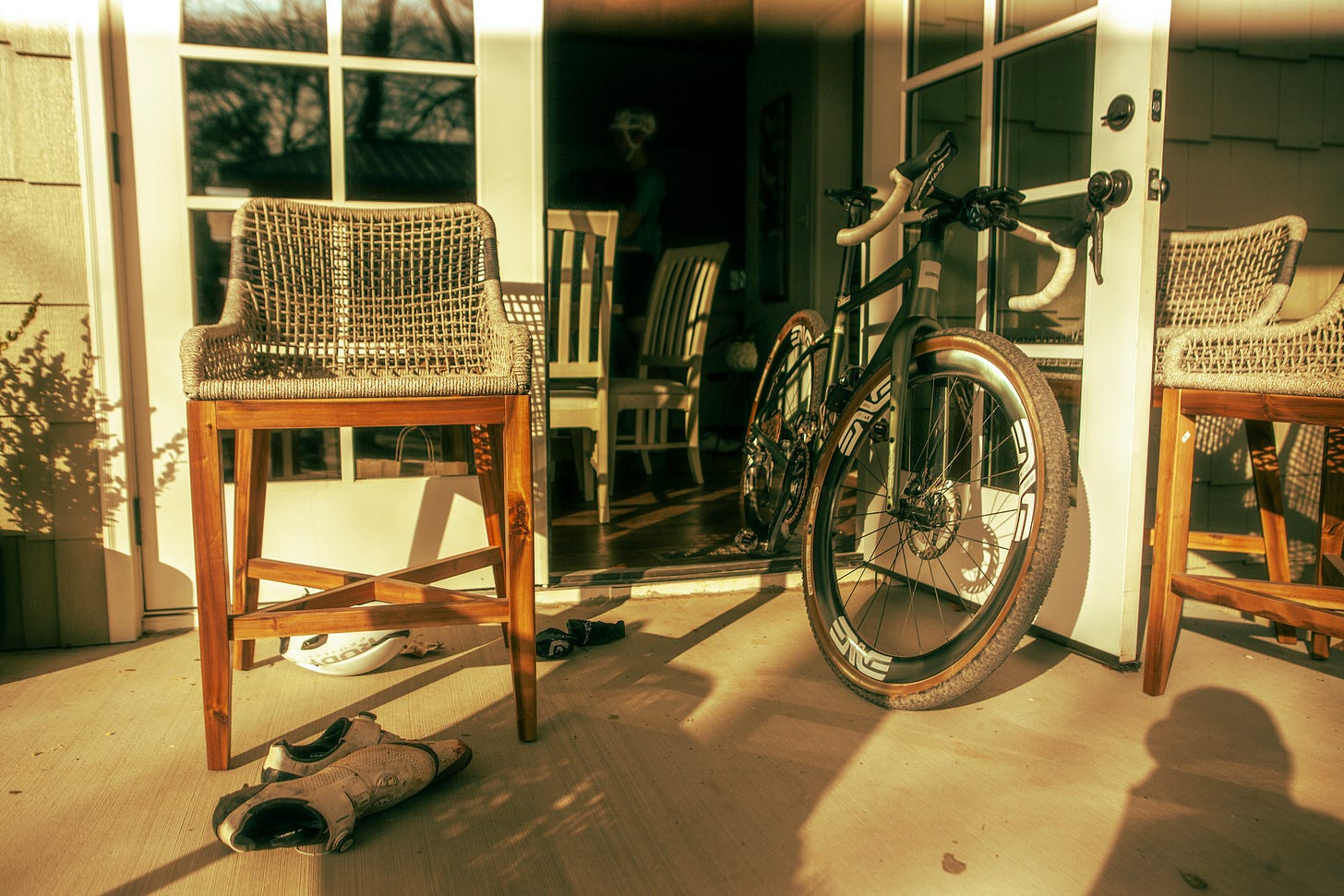





Is your W' about 18-19,000 kj ?
Love the “coaches corner” with proper in-depth data points and analysis. Also that you openly admitted you ignored the plan 😂
Well done on the win! 🏆